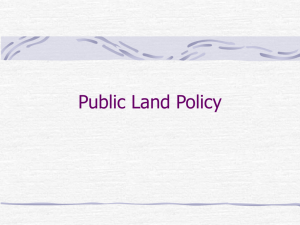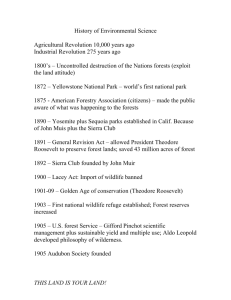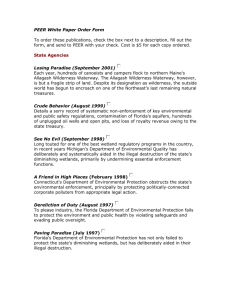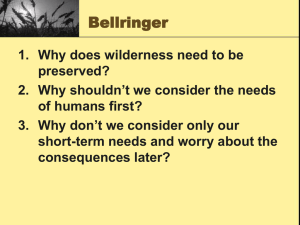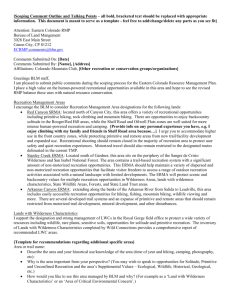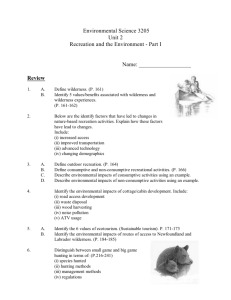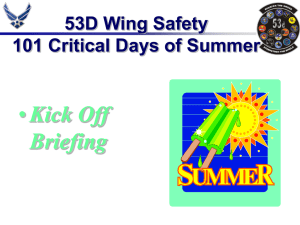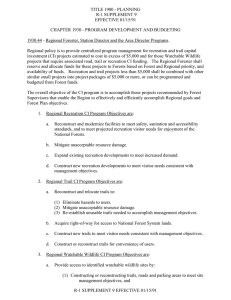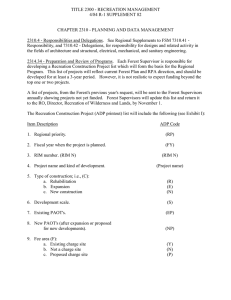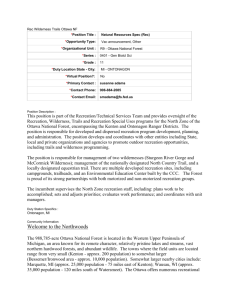Unit 5 Review Day
advertisement
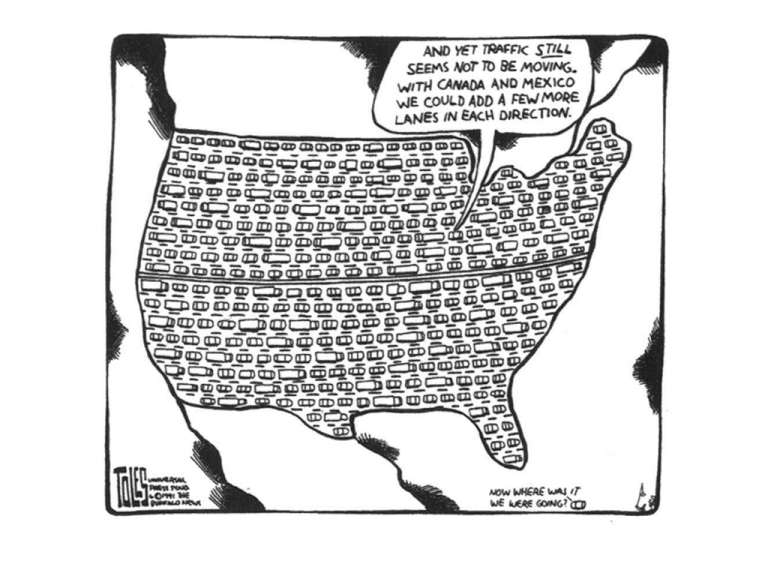
Applying any three of the basic principles of smart growth, explain how the private land surrounding federally owned property might be developed to minimize environmental impacts. • • • • • 1. Mixed Land Uses- As opposed to traditional zoning, mix land uses of business, residential, retail, education and recreation promote walking and bicycling as opposed to automobile use, thereby reducing noise, air pollution and energy consumption. 2. Create walkable neighborhoods- Positioning of buildings and parking lots works in conjunction with #1 to reduce noise, air pollution, and energy consumption. 3. Take advantage of compact building design- Through the use of multistory buildings for residences, businesses and parking garages, the amount of impervious surfaces can be reduced, thereby reducing runoff and the risk of flooding as well as increasing groundwater recharge. 4. Preserve farmland, open space, and critical environmental areas - Farmland can provide a local source of fresh produce and other agricultural products, thereby reducing the need to import food. Preserving open space and critical environmental areas can enhance those areas in the federally-owned land, thereby reducing habitat fragmentation. 5. Provide a variety of transportation choices - With viable options for walking, bicycling, and mass transit, energy consumption can be reduced and air quality improved. • What priorities do city planners need to consider? Ideal land use strategies • Explain the positive feed back loops of urban blight • Explain the positive feed back loops of urban sprawl MEASURING YOUR IMPACT The Costs of Commuting Imagine that you are one of 1,000 people who used to live in a downtown area and walked or took public transportation to work. Now you and the others have moved to the suburbs and drive 20 km per day each way. • (a) How many additional kilometers are being driven each day by those 1,000 people? • • (b) How many additional kilometers are being driven each week by the 1,000 people? (Assume that each person works 5 days a week.) • 200,000 • (c) How many additional kilometers are being driven each year by those 1,000 people? • • 40,000 10,000,000 (d) If the average car gets 10 km per liter, how many liters of gasoline will be used by those 1,000 people each year? • 1,000,000 • (e) Assuming that you are not going to move back to an urban area or change your job, what measures could you take to lessen your impact on the environment? • Drive a car with higher fuel efficiency, carpool, or use public transportation. Telecommute. Identify and explain four public land management agencies that are involved in managing this public land. • 1. Bureau of Land Management - The major responsibility of this agency is to oversee grazing practices; since this property appears to include open grasslands, BLM may be involved. Additionally, off-road driving and forests are also pictured which fall under BLM jurisdiction. • 2. U.S. Forest Service - USFS oversees the timber program and builds and maintains logging roads. Recreational use and the maintenance of the forest biodiversity also are the responsibilities of this agency. • 3. National Park Service - The large building in the center of the land might suggest lodgings for tourists or an information center. The NPS is responsible for recreation and wildlife habitat/ species protection. • 4. U.S. Fish and Wildlife Service - The forested area may represent an intact forest ecosystem. There is no evidence of roads (road building is banned in national wilderness preservation areas). The existing building may predate the wilderness designation. The land may be used for wildlife conservation, hunting, and/or recreation.
